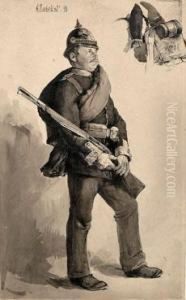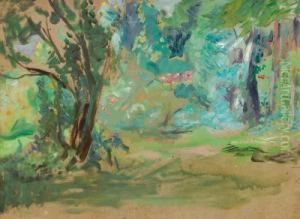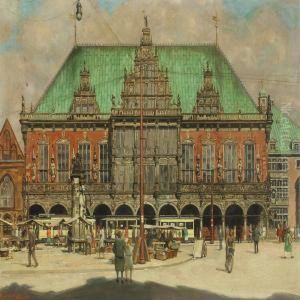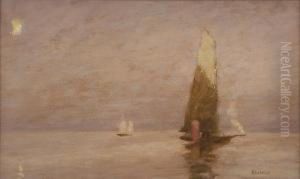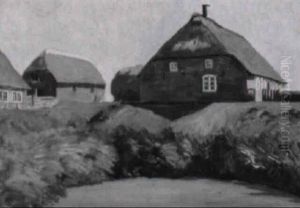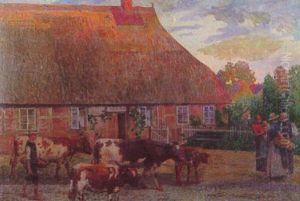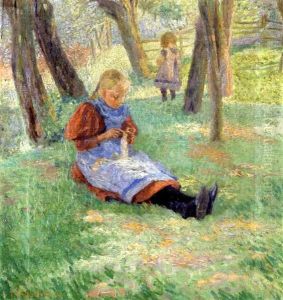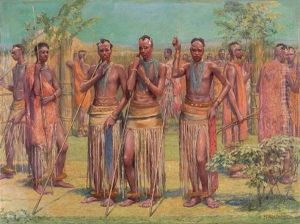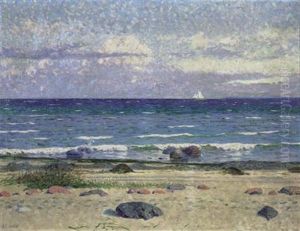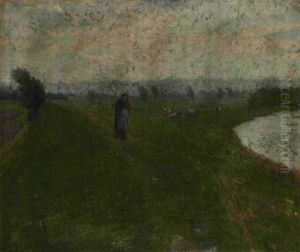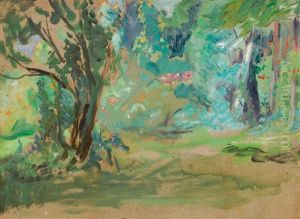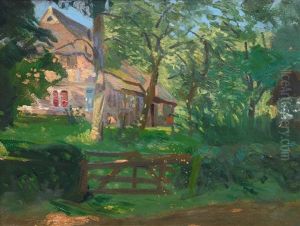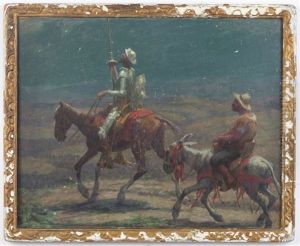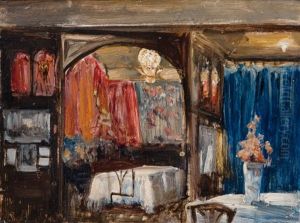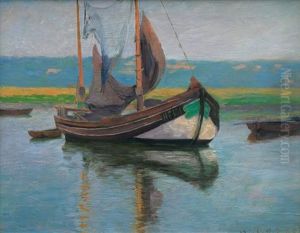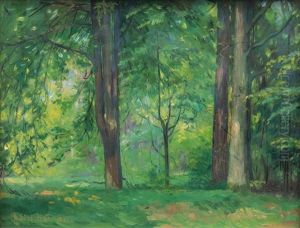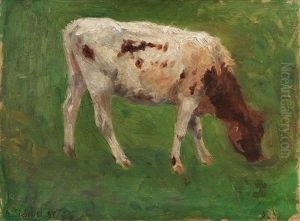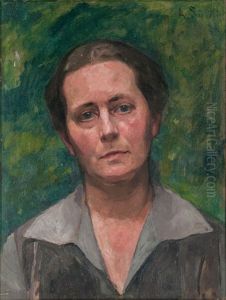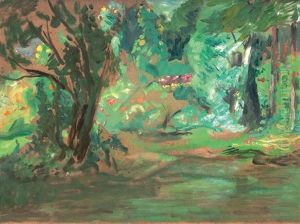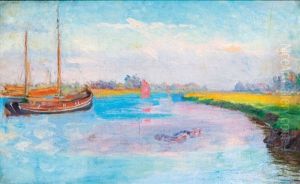Arthur Siebelist Paintings
Arthur Siebelist was a German painter associated with the Impressionist movement, born in Hamburg on March 25, 1870. His artistic journey began with an apprenticeship as a decorative painter, but his talent and interest quickly transcended the commercial aspects of art. He moved to Munich, which was a significant art center in Germany at the time, to further his education. There, Siebelist attended the Academy of Fine Arts and was influenced by the work of the French Impressionists, which was beginning to gain recognition in Germany.
Siebelist's style evolved towards plein air painting, characterized by a vivid portrayal of natural light and atmosphere. He became known for his landscapes and scenes of rural life, which he rendered with loose brushwork and a bright palette. His work reflected a fascination with the transient effects of light and color, an attribute that linked him to the broader Impressionist movement.
In 1897, Siebelist returned to Hamburg and, along with other artists, formed the Hamburgische Künstlerclub (Hamburg Artists' Club). This group was instrumental in promoting Impressionism in northern Germany, and Siebelist's role as a teacher and mentor to younger artists was significant. He taught at his own private school, the Siebelist School of Painting, which became a hub for emerging talent in Hamburg.
Despite his association with Impressionism, Siebelist's work retained a certain individuality, with a stronger emphasis on structure and form than some of his French counterparts. Throughout his career, he exhibited widely, participating in shows at the Glaspalast in Munich and other important venues, contributing to the spread of Impressionist aesthetics in Germany.
Arthur Siebelist continued to paint and teach until his death on January 30, 1945, in Hamburg. His legacy is preserved in his contributions to German Impressionism and the influence he had on a generation of northern German artists. His works can be found in various art collections and museums, where they continue to be appreciated for their vibrant portrayal of the natural world.
